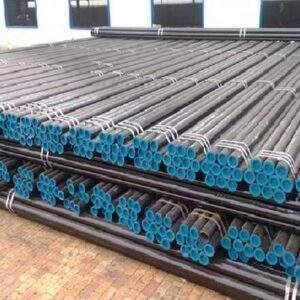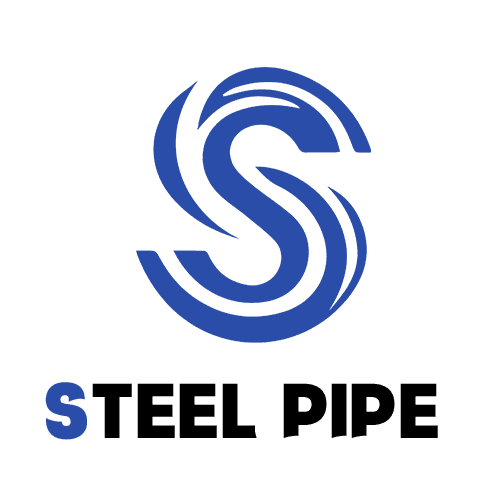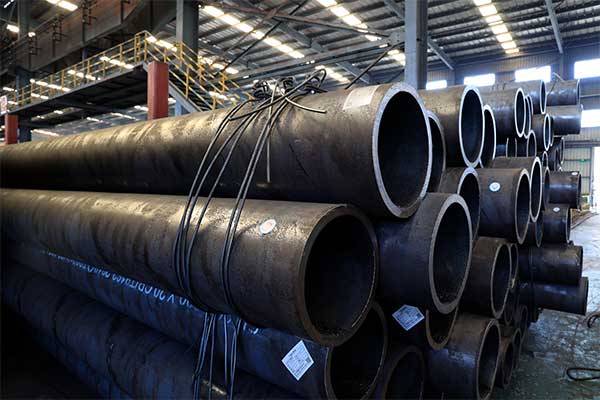Welcome to My Blog!
Before we dive into the content, I’d love for you to join me on my social media platforms where I share more insights, engage with the community, and post updates. Here’s how you can connect with me:
Facebook:https://www.facebook.com/profile.php?id=61559060896490
Now, let’s get started on our journey together. I hope you find the content here insightful, engaging, and valuable.
Introduction

In the world of industrial manufacturing and construction, the choice of materials can greatly influence efficiency, safety, and overall performance. Seamless steel pipes, known for their strength, durability, and reliability, have become a critical component in many industrial applications. This blog delves into how seamless steel pipes enhance industrial efficiency, highlighting their benefits, applications, and the factors contributing to their superior performance.
Understanding Seamless Steel Pipes
What Are Seamless Steel Pipes?
Seamless steel pipes are hollow cylindrical tubes made from steel without any welded seams. They are manufactured through processes such as extrusion or rotary piercing, which result in a continuous pipe with uniform strength and structural integrity. The absence of seams means that seamless steel pipe can withstand higher pressure and stress compared to their welded counterparts.
Manufacturing Process
The production of seamless steel pipe involves several key stages:
- Billet Preparation: Steel billets are heated to a high temperature and then pierced to form a hollow tube.
- Elongation: The hollow tube is further elongated and reduced in diameter through extrusion or elongation processes.
- Heat Treatment: The pipes are heat-treated to enhance their mechanical properties and remove internal stresses.
- Finishing: The pipes are subjected to finishing processes such as surface treatment, testing, and inspection to ensure they meet industry standards.
Benefits of Seamless Steel Pipes
Enhanced Strength and Durability
Seamless steel pipes are known for their superior strength and durability. The absence of welds eliminates weak points in the pipe structure, allowing them to withstand high pressure and extreme conditions. This makes them ideal for applications requiring high load-bearing capacity and long-term reliability.
Improved Safety
The robust nature of seamless steel pipe translates into increased safety in industrial operations. Their ability to handle high pressure without risk of failure makes them suitable for critical applications, including oil and gas pipelines, chemical processing, and high-pressure steam systems.
Corrosion and Wear Resistance
Seamless steel pipes exhibit excellent resistance to corrosion and wear. They are often coated or treated to enhance their resistance to environmental factors such as moisture, chemicals, and abrasive substances. This extended durability reduces maintenance requirements and extends the lifespan of the pipes.
Reduced Maintenance Costs
Due to their durability and resistance to damage, seamless steel pipe require less frequent maintenance compared to welded pipes. Their long service life and minimal risk of failure contribute to lower overall maintenance costs and increased operational efficiency.
Applications in Various Industries
Oil and Gas Industry
In the oil and gas industry, seamless steel pipes are used for transporting crude oil, natural gas, and other fluids over long distances. Their high strength and resistance to high pressure make them suitable for both onshore and offshore applications.
Chemical Processing
Seamless steel pipes are essential in chemical processing plants, where they handle corrosive chemicals and high-pressure processes. Their resistance to corrosion and ability to maintain structural integrity under harsh conditions are crucial for safe and efficient operations.
Construction and Infrastructure
In construction and infrastructure projects, seamless steel pipe are used for structural supports, bridges, and high-rise buildings. Their strength and load-bearing capacity make them suitable for supporting heavy loads and withstanding various environmental stresses.
Power Generation
Seamless steel pipe play a vital role in power generation facilities, particularly in steam and gas turbines. Their ability to handle high temperatures and pressures is essential for maintaining efficient and reliable power generation.
Key Properties of Seamless Steel Pipes
| Property | Description | Benefit |
|---|---|---|
| Tensile Strength (MPa) | 500-700 | High load-bearing capacity |
| Yield Strength (MPa) | 300-500 | Resilience under stress |
| Corrosion Resistance | High (with coatings) | Extended durability and reduced maintenance |
| Heat Resistance | Up to 800°C (depending on grade) | Suitable for high-temperature applications |
| Toughness | Excellent impact resistance | Enhanced safety and reliability |
Comparative Advantages Over Welded Pipes
Structural Integrity
Seamless steel pipes offer superior structural integrity compared to welded pipes. The continuous, uniform material without seams ensures consistent performance and strength throughout the length of the pipe.
Pressure Handling
Seamless pipes can handle higher pressures due to the absence of welds, which are potential weak points. This makes them ideal for applications involving high-pressure fluids and gases.
Manufacturing Consistency
The manufacturing process for seamless steel pipes results in more consistent quality and fewer defects compared to welded pipes. This consistency contributes to overall reliability and performance.
Challenges and Considerations

Cost Factors
While seamless steel pipes offer numerous benefits, they can be more expensive than welded pipes due to the more complex manufacturing process. However, the long-term savings from reduced maintenance and increased durability often outweigh the initial cost.
Size Limitations
Seamless steel pipes are generally available in a range of standard sizes. For very large or custom-diameter pipes, additional considerations may be required, including potential cost increases and availability.
Heat Treatment Requirements
Seamless steel pipes often require heat treatment to achieve optimal mechanical properties. This additional processing step adds to the overall cost and manufacturing time but is essential for ensuring the pipes meet industry standards.
Conclusion
Seamless steel pipes play a crucial role in enhancing industrial efficiency across various sectors. Their superior strength, durability, and resistance to pressure and corrosion make them a preferred choice for critical applications. While they may come with higher initial costs, the benefits of reduced maintenance, increased safety, and extended service life make them a valuable investment.
By understanding the advantages of seamless steel pipes and their applications, industries can make informed decisions about material choices and improve operational efficiency. As technology and manufacturing techniques continue to advance, seamless steel pipe will remain a key component in achieving reliable and efficient industrial operations.
FAQ
What are seamless steel pipes?
Seamless steel pipes are hollow tubes made from steel that are produced without welding seams. They are known for their strength, durability, and ability to withstand high pressure.
How are seamless steel pipe manufactured?
The manufacturing process involves heating steel billets, piercing them to form a hollow tube, elongating the tube, heat-treating it, and finishing it to ensure quality and performance.
What are the benefits of using seamless steel pipes?
Benefits include enhanced strength and durability, improved safety, corrosion and wear resistance, and reduced maintenance costs. These properties make them suitable for demanding industrial applications.
In which industries are seamless steel pipe commonly used?
Seamless steel pipe are commonly used in the oil and gas industry, chemical processing, construction and infrastructure, and power generation, among others.
How do seamless steel pipes compare to welded pipes?
Seamless steel pipes offer superior structural integrity, higher pressure handling, and manufacturing consistency compared to welded pipes. However, they can be more expensive and may have size limitations.




